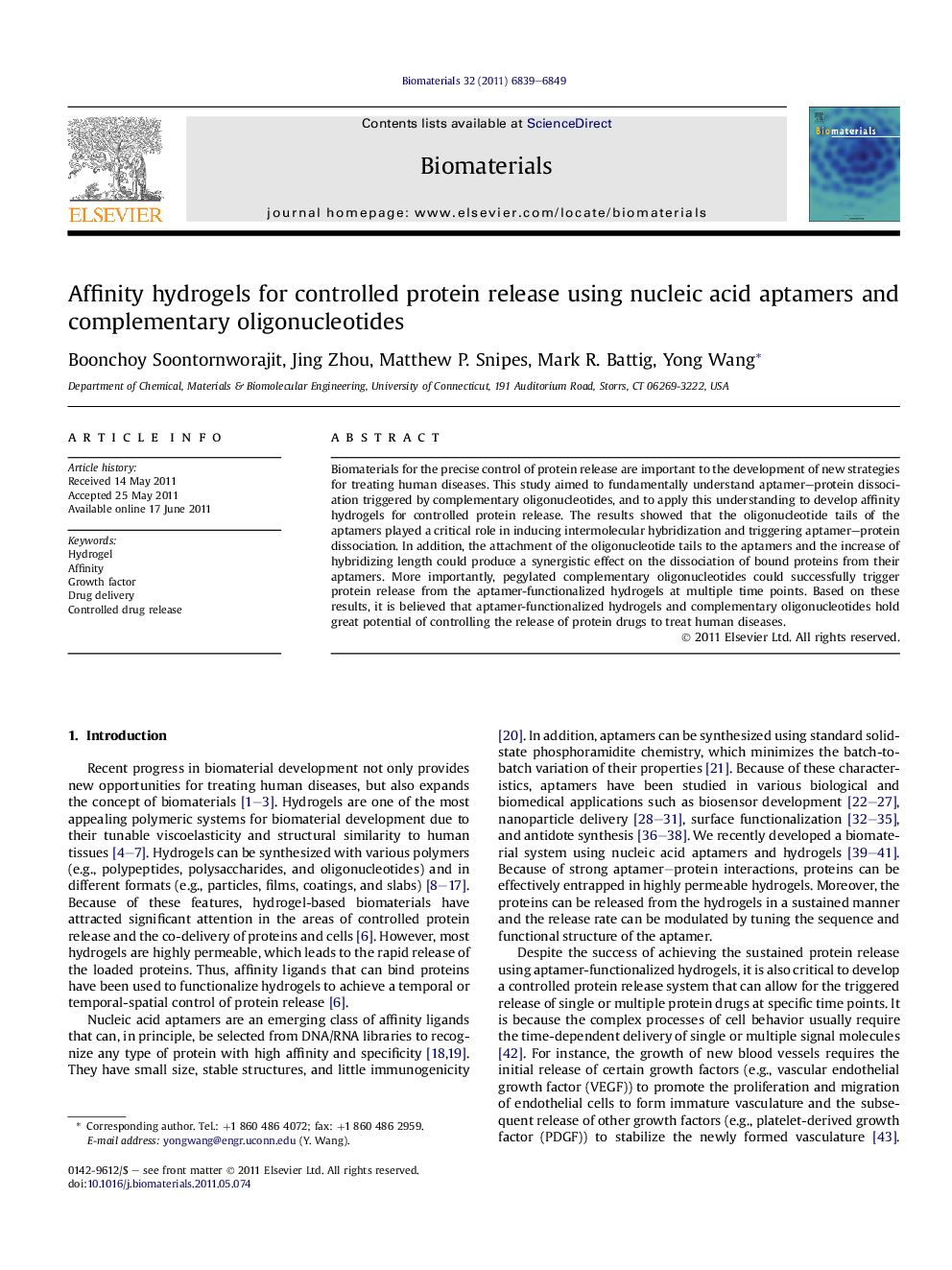| Article ID | Journal | Published Year | Pages | File Type |
|---|---|---|---|---|
| 7803 | Biomaterials | 2011 | 11 Pages |
Biomaterials for the precise control of protein release are important to the development of new strategies for treating human diseases. This study aimed to fundamentally understand aptamer–protein dissociation triggered by complementary oligonucleotides, and to apply this understanding to develop affinity hydrogels for controlled protein release. The results showed that the oligonucleotide tails of the aptamers played a critical role in inducing intermolecular hybridization and triggering aptamer–protein dissociation. In addition, the attachment of the oligonucleotide tails to the aptamers and the increase of hybridizing length could produce a synergistic effect on the dissociation of bound proteins from their aptamers. More importantly, pegylated complementary oligonucleotides could successfully trigger protein release from the aptamer-functionalized hydrogels at multiple time points. Based on these results, it is believed that aptamer-functionalized hydrogels and complementary oligonucleotides hold great potential of controlling the release of protein drugs to treat human diseases.
► We studied the effects of molecular hybridization on protein-aptamer dissociation. ► Both oligonucleotide tail and hybridizing length are important factors. ► Importantly, pegylated complementary oligonucleotides can trigger protein release. ► In addition, the triggered release can be achieved at multiple time points.
